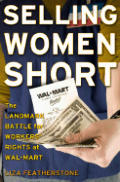
The dreaded word in the context of Indian economy: inflation. So what is inflation? The government says that it can contain inflation to 5%. What does it signify?
At the basic level, inflation is nothing but a rise in prices. And why does it have to rise? Read ahead and find out!
Inflation is defined as a sustained increase in the general level of prices for goods and services. It is measured as an annual percentage increase. As inflation rises, every rupee you own buys a smaller percentage of a good or service.
Some variants of inflation are:
- Deflation: When the general level of prices are falling
- Hyperinflation: Its an extreme case, when the prices rise dramatically, leading to breakdown of the country's monetary system.
- Stagflation: combination of high unemployment and inflation.
Why inflation?
Inflation or the rise in prices is due to the effects of demand and supply. The demand and supply curves intersect to determine the prices. The two conditions that tend to rise the prices are:
- Demand pull inflation: This occurs when there is more demand for a scarce product. A concept very apt for a country like India
- Cost push inflation: When companies' costs go up, they need to increase prices to maintain their profit margins. Increased costs can include things such as wages, taxes, or increased costs of imports.
The prices might rise, but if it is supported by a corresponding rise in wages then the buying capacity remains the same. Hence a term real wage is used to determine this.
How is inflation measured?
Measuring inflation is a difficult problem for government statisticians. To do this, a number of goods that are representative of the economy are put together into what is referred to as a "market basket." The cost of this basket is then compared over time. This results in a price index, which is the cost of the market basket today as a percentage of the cost of that identical basket in the starting year.
There are two main price indexes that measure inflation:
- Consumer price index - A measure of price changes in consumer goods and services such as food, clothing, shelter and automobiles. The CPI measures price change from the perspective of the purchaser.
- Producer price indices - A family of indexes that measure the average change over time in selling prices by domestic producers of goods and services. PPIs measure price change from the perspective of the seller.
In general, investors follow CPI more than PPIs.
Interest rates directly affect the credit market (loans) because higher interest rates make borrowing more costly. By changing interest rates, the RBI tries to achieve maximum employment, stable prices, and a good level growth. As interest rates drop, consumer spending increases and this in turn stimulates economic growth.
A control has to be maintained as a tradeoff between high inflation and deflation. The optimum level is a level of 2-3%. India, of course is higher on the scale.
Your investments would be affected by inflation in a big way. The returns you received would not be effective enough. The inflation would eat into your returns. For instance, if you earn a return of 12% and the inflation stands at 5%, you are actually making only 7%. Just think if it were the other way round; you would lose money in spite of investing!!
Gyan taken from http://www.investopedia.com/university/inflation/default.asp



